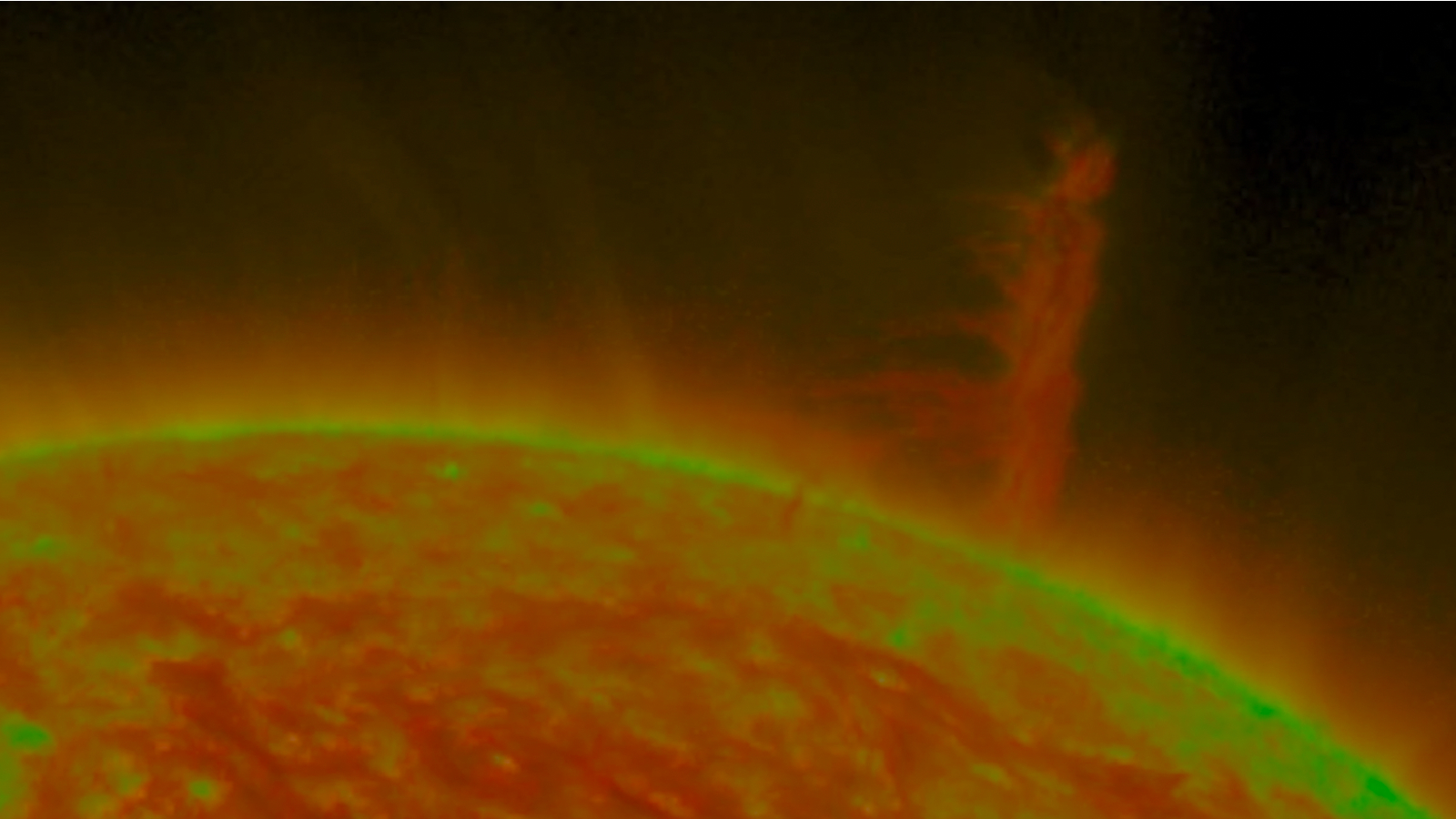Gigantic 'solar tornado' taller than 14 Earths raged for 3 days. What caused it?
A massive solar tornado recently towered over the sun's north pole for three days. The plasma twister was created by a rapidly rotating magnetic field.

An enormous "solar tornado" the size of 14 Earths stacked on top of each other recently raged on the sun's surface for three whole days. The enormous plasma twister may be one of the largest ever recorded.
The solar tornado emerged near the sun's north pole on March 15 and continued to grow and shape-shift until it finally dissipated on March 18, when the fiery twister "overtorqued itself" and spit out a plume of plasma, or ionized gas, into space, Spaceweather.com reported. The ejected plasma will not hit Earth.
Astrophotographer and Arizona resident Andrew McCarthy tweeted that the solar tornado was "14 Earths tall," which is around 111,000 miles (178,000 kilometers) tall. The twister also rained "moon-sized" globs of plasma on the solar surface, he added.
A 2013 study in the journal Solar Origins of Space Weather and Space Climate notes that solar tornadoes are typically 15,500 to 62,000 miles (25,000 to 100,000 km) tall, which would appear tiny compared with the latest gigantic twister. The study also reveals that solar tornadoes normally form in small groups — another aspect that makes this lone cone unusual.
Related: 10 solar storms that blew us away in 2022
What caused the solar tornado?
"Unlike tornadoes on Earth, which are shaped by wind, tornadoes on the sun are controlled by magnetism," according to Spaceweather.com. Horseshoe-shaped loops of plasma attached to the solar surface, known as solar prominences, get stuck in rapidly rotating magnetic fields, which trap and then spin the ionized gas into a twister.
But what causes these rotating magnetic fields?
Sign up for the Live Science daily newsletter now
Get the world’s most fascinating discoveries delivered straight to your inbox.
A 2013 study in the journal Astronomy & Astrophysics found that a 2011 solar tornado was preceded by three separate nearby solar flares within 10 hours. The researchers proposed that the flares weakened the magnetic field in the area, creating an expanding coronal cavity that began to spin as a result.
This is not the only bizarre plasma structure that has been seen near the sun's poles in recent months.
On March 9, a 62,000-mile-tall "plasma waterfall" was spotted near the sun's south pole. The falling wall of plasma is known as a "polar crown prominence," a type of solar prominence that often collapses inward due to the intense magnetic fields at the poles. And on Feb. 2, a massive solar prominence broke off from the sun's north pole and became trapped in an enormous and fast-moving polar vortex that lasted about eight hours.
These peculiar phenomena are likely becoming more common because solar activity is ramping up in intensity as the sun approaches a peak in its 11-year solar cycle, known as the solar maximum, which is scheduled to arrive in 2025.

Harry is a U.K.-based senior staff writer at Live Science. He studied marine biology at the University of Exeter before training to become a journalist. He covers a wide range of topics including space exploration, planetary science, space weather, climate change, animal behavior and paleontology. His recent work on the solar maximum won "best space submission" at the 2024 Aerospace Media Awards and was shortlisted in the "top scoop" category at the NCTJ Awards for Excellence in 2023. He also writes Live Science's weekly Earth from space series.









